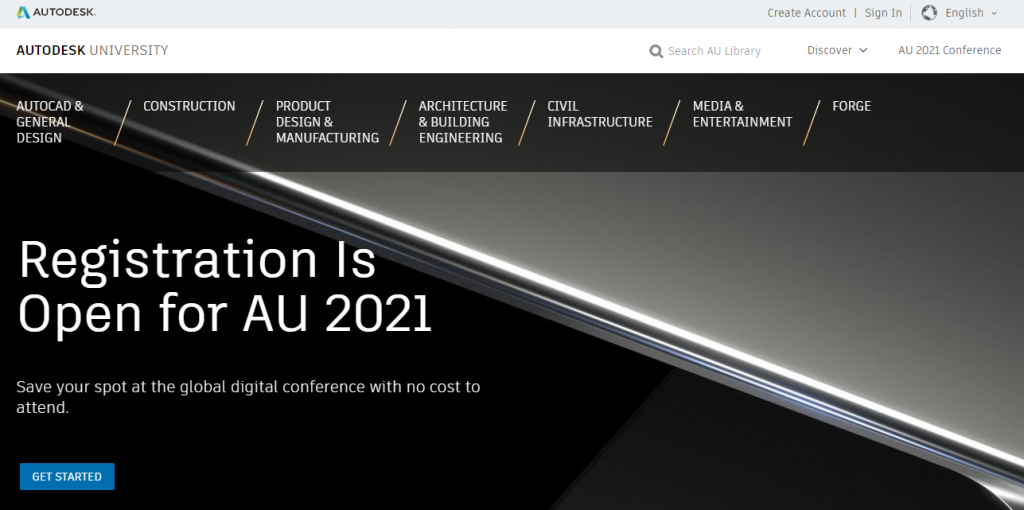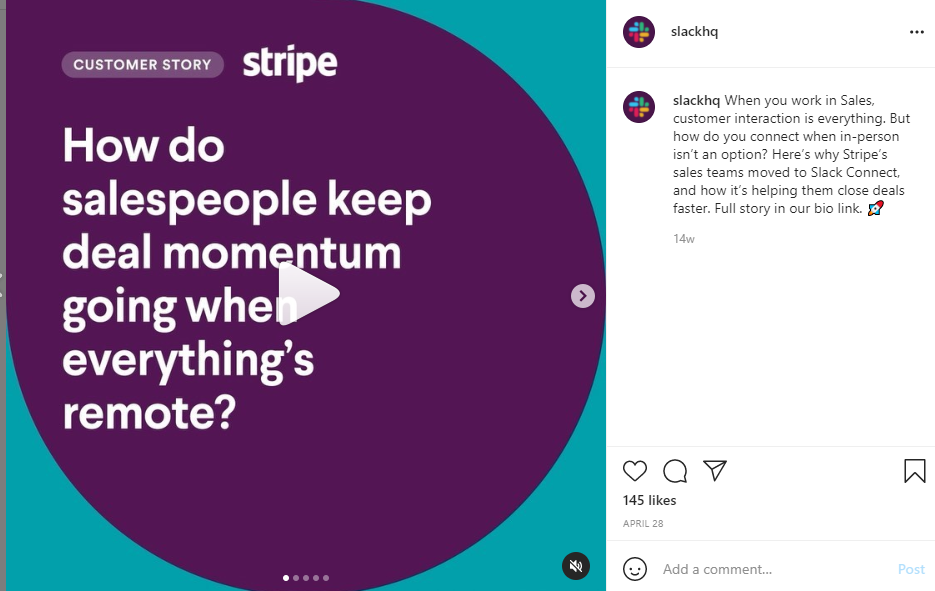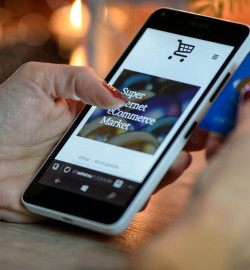How to Do Inbound Lead Generation in 2022
Nearly anything that exists nowadays needs some sort of fuel to work.
Modern cars, for instance, need gas or electricity to ride; humans need food to live; windmills need wind to spin, and businesses need customers to grow and prosper.
But unlike the wind, customers rarely come out of nowhere. That’s why businesses need to implement various marketing strategies to attract new prospects.
One of such strategies is inbound lead generation — one of the essential marketing activities businesses should be involved in.
This type of marketing can help you bring in new customers and retain the current ones. In short—it can help you secure your company’s future.
So, let’s talk about this approach to lead generation in detail and explore different strategies that will let you effectively win new prospects.
What is Inbound Lead Generation?
Inbound lead generation is a process of attracting prospects to a business by providing practical information and value to clients. It establishes personalized communication based on customer’s needs and readiness to buy.
You can think of this process as leaving a trail of breadcrumbs for your prospects to follow to the bottom of your sales funnel.
The breadcrumbs could be anything your potential buyers might be looking for to solve their problems. For example, an explainer video, specific product or service, blog article, webinar, and so on.
This lead generation method allows your prospects to decide to initiate contact with your brand when the timing is right for them. Contrary to the outbound lead generation process, where the leads receive cold calls or emails whenever the marketer chooses to reach out.
In this regard, the inbound approach is less intrusive and interruptive for potential buyers.
Some other benefits of inbound marketing include
- Better lead quality. Prospects who are familiar with your products and services are more likely to purchase from you. They may be trusting your brand more than prospects who have never heard of your business.
- Higher cost-efficiency. You can get more leads for your business nearly for free. Once you have written a few blog posts or created engaging videos, they will continue attracting new customers, allowing you to focus your efforts on other tasks.
- More visibility and awareness. You can get more attention to your company by producing interesting content and sharing it on the channels your prospects frequently use.
How to Generate Inbound Leads?
Inbound lead generation is built on two concepts: corresponding marketing strategies and generating prospects. Digital marketing methods help attract customers through content, whereas lead generation gets consumers into the sales funnel.
So, how do you combine these two to make inbound sales? Here are four steps to follow:
- Attract. The first step in the lead generation process involves attracting visitors to your website with helpful content through one of your marketing channels (blog, social media, website, etc.). The key is to offer content that would help your target audience solve their problems and fulfill their needs.
- Convert. Once the visitor has landed on your website, they’ll receive a message inviting them to click on a CTA (Call-to-Action). Next, the CTA takes them to the dedicated landing page where they fill in their contact details in the lead capture form in exchange for the content they came for. Your visitor became your new lead.
- Close. Your lead’s contact details get added to the CRM software, marketing automation tool, and your email workflows to nurture them until they become a paying customer.
- Delight. You have successfully closed a sale but it doesn’t mean that your customer’s journey is over. You should continuously strive to delight them so that they become repeat customers (and even advocates for your brand).
Here’s a graph showing all these four steps in action:

Inbound Lead Generation Strategies
All lead generation techniques have the same goal: to drive prospects to your landing pages, turn them into leads, then into paying customers and continue providing great customer service so they stick around longer.
As outlined in the previous section, generating leads starts with promoting your business on various channels to allow your prospects to discover you.
So, what channels are suitable for driving traffic to your business and how can you leverage them?
1) SEO (Search Engine Optimization)
SEO is one of the best lead generation techniques because it helps you drive organic traffic and improve brand visibility.
You get free traffic and your prospects can easily discover your products or services—a win-win situation.
Considering that as many as 75 percent of search engine users never scroll past the first page of search results, businesses with poorly optimized websites struggle to get customers.
You can bolster your SEO with guest blogging. It will bring you in some extra traffic and, more importantly, help you get precious inbound links (backlinks).
Guest posting is also a great opportunity for establishing profitable partnerships and finding new customers.
(If you’re new to SEO and want to learn more, take a look at Google Guide to SEO that will teach you everything you need to know to get your website and content optimized and found.)
2) Content marketing
Content marketing works for B2B, B2C, as well as hybrid business models.
When it comes to B2B, as many as 88 percent of marketers use content marketing as an inbound lead generation tactic. They specifically focus on blog articles, eBooks, and whitepapers.
With original content and compelling copy, you can successfully guide your visitors to landing pages through CTAs, where they are converted into leads.
In return for submitting their details, they receive valuable information on the topic they are interested in.
3) Social media marketing
According to the Statista’s findings, the number of global social media users is expected to reach almost 4.41 billion worldwide in 2025.
Among those billions of users, thousands (millions?) of them could be your prospects and leads. It’s worth tapping into that pool.
You’ll need to pick a few social media platforms, build your presence, and drive prospects to your business.
Through regular posting and communication, you can build relationships and sneak in CTA links in your posts that will take your followers to the relevant landing pages.
From there, you’re one step closer to generating new leads for further processing.
4) Product demos and trials
Potential SaaS buyers are often concerned about spending their money on something they haven’t tried first. Product demos and service trials are great strategies for mitigating such concerns.
They are beneficial for you, too.
On the one hand, they help your leads gain trust and confidence in your product. On the other, trials give you time and opportunity to entice your leads to buy with additional resources and time-limited offers.
You can also add branding to the trial or demo version of your product such as a logo of your company.
This way, whoever sees it can click it to be brought to your landing page or website. From there, they will follow the same process to be turned into a lead.
5) Email marketing
Email marketing, a digital marketing method mostly used for lead generation, can bring you a whopping 4200 percent ROI!
You can reach people with targeted email campaigns who are already familiar with your brand. That’s why it will be easier for you to persuade them to take action through your CTAs inside emails.
Each email campaign will also deliver you some insights about which piece of content has brought more engagement from particular segments.
6) Live chat and chatbots
Live chat and chatbots are both amazing tools for delivering a superior customer experience to anyone who lands on your website.
Chatbots are also a great inbound lead generation channel. Up to 36 percent of marketers said they use chatbots to acquire more leads.
You can have several chatbots on your website and each of them can perform a different lead gen task based on your user actions and behavior.
For instance, a bot can offer all your first-time visitors the latest industry report, which will be sent to them when they leave their email address.
Chatbots can also replace traditional lead capture solutions such as pop-ups, quizzes, and opt-in forms.
It can also reveal a lot about your email design (including CTAs positioning and messages), so you’ll know how to improve your communications and retain more customers.
7) Pay-per-click (PPC)
PPC is another effective method for traffic marketing because it enables you to target specific users who are actively searching for solutions you provide.
Pay-per-click ads appear when users search for things online using a search engine. They are especially useful for consumers looking for something to buy.
Are PPC ads worth it? In short, yes. Statistics show that 50 percent of visitors arriving at an e-commerce site from paid ads are more likely to buy than those who came from an organic link.
For even better results, you can combine SEO with PPC to maximize your web traffic and conversion opportunities.
8) Retargeting ads
You can consider retargeting as one of the inbound marketing strategies since this method allows for nurturing leads. Although, the process itself doesn’t take place on your website.
Retargeting ads use cookies installed on your website to track each visitor’s activity, so you’ll know exactly what they have searched for.
Once they’ve left your website or store, you can bring them back with retargeting ads they will see on other websites they’re visiting.
Website visitors who see retargeting ads are 70 percent more likely to convert on the seller’s website.
That’s mainly because you display highly relevant content to prospects who are already aware of your brand and products.
9) YouTube
YouTube is the second most-visited website (or a search engine) in the world. It also happens to be the second most popular social platform—over 2 billion users visit YouTube each month.
What’s in it for you is that you can use this platform to generate inbound leads with interesting and high-quality videos.
The trick is, however, to rank them up for search terms popular in your niche. A couple of tips on how you can do it:
- Research keywords with Search Suggest. It’s the same feature you’ll find in the Google search bar. Type in a word or a phrase into the search bar and wait for the suggestions to appear. The suggested keywords are gold because they show what people are looking for.
- Analyze keywords used by your competition. Check what videos related to your business receive the most views and comments, and try to identify some keywords used in video titles and descriptions.
Since you want to use YouTube for inbound lead generation, don’t forget to provide a link to your website or a landing page, and encourage viewers to subscribe to your channel.
B2B Inbound Marketing Ideas and Examples
Whether you’re just getting started or want to rethink your approach to your current lead generation strategy, take a look at these first-rate examples of B2B companies that simply nailed inbound lead generation.
1) HubSpot (blogging)
Did you know that inbound marketing was first popularized by HubSpot back in the mid-2000s?
HubSpot not only helps companies attract, convert, and close new customers with their marketing and sales platform but effectively uses the this approach to generating prospects itself.
One of the prime examples of their inbound lead generation efforts is their blog. It houses plenty of helpful articles on a wide range of topics that are perfectly geared for marketers and salespeople.
You’ll also find guides, eBooks, and video courses in their Resources section:

There is an entire library on the topics of marketing, sales, analytics, and much more.
2) Ahrefs (video marketing)
Ahrefs is one of the best solutions for backlinks and SEO analysis. Their blog is superb and so is their video content.
Ahrefs runs a YouTube channel where it regularly releases new videos to help its audience grasp SEO, blogging, and marketing. Here’s just a glimpse of what the viewers are in for:
The video content is tailored for beginners, as well as for a more advanced audience, which means that they target several segments of potential users.
Viewers who prefer a more structured learning approach can follow those videos in a form of organized thematic courses.
3) Autodesk.Inc (content marketing)
Autodesk is a design software and services company. They cater to customers from the architecture, engineering, construction, product design, and digital media industries.
Their product portfolio is rich and the products themselves require knowledge and training from the users to be used successfully.
For that reason, Autodesk produced dozens of content for their current customers to stay in a loop and prospects who look for the best solution for their needs.
Apart from video training and webinars, Autodesk provides a wide range of eBooks for prospects to download—in exchange for filling out the lead capture form. And, similar to HubSpot, Autodesk has a learning center:

You can register to participate in one of the custom courses – general design, construction, product design, architecture, and many more.
4) Slack (social media marketing)
Slack is a workplace communication and collaboration platform designed for small and large companies.
Slack uses its social media to attract and communicate with different segments of the audience.
They also share content on several different topics that would be relevant to all of their viewers, not just one segment. And, you can learn about case studies and success stories involving Slack’s clients:

The tweets and posts are frequent and relevant. This way, customers and prospects are well informed about recent product updates, the latest entries in the Resources Library, and the company news.
5 Reasons Why Inbound Lead Generation Doesn’t Work
It might happen that, despite your best efforts, you’re not seeing the prospects and leads flooding in as you hoped for.
You think you have done everything as you should but your hard work doesn’t seem to pay off.
What could have gone wrong?
Let’s go through some common inbound lead generation pitfalls and see what you can do about them.
1. You don’t know your customers
So, you’ve created an amazing eBook but nobody’s downloading it?
Perhaps that’s because your potential buyers don’t find it helpful. In other words, it’s irrelevant to their needs, it doesn’t help solve their problems, or the timing isn’t quite right.
To fix this issue, you’ll need to thoroughly research your customers and create a persona who will help you take your content (and business) in the right direction.
Persona is a research-based profile of your consumer who has already bought from you or used your product or service. You can also think of it as a template for your ideal customer.
Your buyer persona is essential to your inbound lead generation success as it will give you an overview of what type of leads you want to attract.
It will provide you the necessary insights to meet your potential buyers’ expectations.
2. Your value proposition isn’t clear enough
Catchy slogans, product features and benefits aren’t the same as a value proposition.
The value proposition is a short statement that encapsulates reasons why your customer would want to choose you (your brand/ your product/ your service) over the competition.
Ideally, it would also clearly state what makes your product different (and better) compared to its market rivals.
Your brand’s value proposition should be communicated clearly with your customer base. For that reason, it needs to match your customers’ values.
So yet again, we’re back to your buyer persona that should help you answer the question regarding your customers’ wants and needs.
3. You neglected your content
Producing quality and relevant content is crucial, but producing it regularly is equally important.
For instance, if you run a blog, then consider creating a schedule for posting new articles.
You don’t need to publish new articles every single day but it’s important to do it regularly.
Since longer blog articles tend to generate more traffic, focus on releasing longer content (even if less frequently) rather than short ones (but more often).
You also need to know what type of content your audience prefers and what would be the optimal length for them (not everyone likes reading long copies, especially on mobile devices). Again, refer to your persona if you’re in doubt.
For example, the B2B audience generally prefers original research (reports, whitepapers, statistics), whereas B2C consumers prefer short videos.
There are tons of content types you may offer your audience, so you don’t need to feel “stuck” with writing just for the blog:
- Checklists
- Infographics
- Templates
- Cheatsheets
- Guides and tutorials
- Slideshare presentations
If your audience is younger, then memes, gifs, and social images could also work.
4. Your website isn’t optimized for conversions
If you’re observing a good amount of traffic on your website but very low conversions, it could mean that your website design needs some attention.
To identify the flaws in your design, you need to first figure out how your visitors are behaving when browsing your website.
Luckily, there are tools created specifically for that task (like HotJar) that you can use to create so-called heatmaps of user actions. The reddish color indicates what areas received the most attention, whereas the blue ones received the least of it.
Besides areas of user’s focus, you can also check which links and CTAs your users click the most and which ones are completely ignored.
You may notice your users clicking non-clickable elements (like images) or certain links repeatedly.
Such behavior might indicate that visitors are confused with the design or navigation and are not quite successful with finding what they’re looking for.
Another design area to look into, apart from the CTA positioning, are the CTA text labels.
Even a small change in wording can improve click rates. E.g.: “Download Your Report” vs. “Download My Report.” You can do split tests to check which labels work better for your visitors.
When you collect enough data, you should be able to identify the main flaws in the design and start implementing gradual fixes.
5. You’re worrying too early
Inbound lead generation is a process, and a process takes time. Especially, when the process is intricate and consists of various elements.
Based on data, 85 percent of companies need as much as seven months to start seeing their first increase in traffic coming from their efforts.
It could take even a year until they see their first results.
What you need to be aware of is that SEO doesn’t happen overnight. It takes a while for Google to index your content and website.
And then, when you’re finally positioned and get some organic keywords, you’re still competing with many other websites that regularly optimize their content—It’s a never-ending battle.
If you have some money put aside for digital marketing, consider spending it on ads. They could give you the momentum your lead generation strategy will need in its early stages.
Inbound Lead Generation Trends in 2022
Just as in other areas of digital marketing, lead generation is subject to changes driven by technological advancements and consumer behavior.
To stay on top of your game, be informed about any trends that have a high potential to shape the future of inbound marketing. After all, you don’t want to stay behind with your strategies and techniques.
There are several key trends in the B2B sector this year.
1) Conversational marketing
Conversational marketing means communication between brands and consumers through chatbots (or virtual agents).
Chatbots are becoming popular because of the consumers’ demand for having a 24/7 digital experience, making quick responses critical for successful lead generation.
It was found that companies that do not respond to their lead query within five minutes risk losing them forever. Luckily, chatbots can easily respond within that time frame.
2) Voice and search marketing
There are around 133 million people globally (66.4 million in the U.S. alone) who own and use voice-enabled assistants for voice search.
No wonder businesses started to focus on optimizing their websites and content for voice search.
So, while you’re researching keywords and phrases people type into Google, try not to forget about long-tail phrases that are typical for conversational queries.
3) Video marketing
Video content is quicker and easier to digest for modern consumers than a written piece of content. Naturally, the popularity of videos has increased over the last few years.
Nowadays, 86 percent of businesses use video as a marketing tool (up from 61 percent in 2016). The most common video types are explainer videos, social media videos, and presentation videos.
By incorporating videos into your lead generation strategy, 89 percent of video marketers reported an increase in ROI and 87 percent in website traffic. They also said that video marketing helps them with lead generation.
4) Personalized outreach based on data
Personalization is another crucial component for the lead generation and nurturing process.
Sales prospects and customers who share their personal information do so to receive a personalized brand experience in return.
Personalization is an approach that touches on many aspects of customer-business interactions. It should be part of your communication, content, as well as products and services.
Personalization delivers great experiences and helps you attract more prospects and convert them into leads and customers.
Inbound Lead Generation: Summary
Inbound lead generation is a method used for attracting new customers through targeted content that was specifically tailored to their needs.
The goal of the content is to push the prospect to take some action that would initiate a two-way relationship and eventually, result in a sale.
Inbound lead generation strategy can bring you many new potential buyers if you’re able to give them what they genuinely want and need.
So, if you still doubt whether you can make money with lead generation, then the answer is “Yes.”
It’s still one of the best ways to interact with today’s consumers and introduce them to your brand. However, it’s becoming increasingly competitive.
You’ll need to regularly produce and update your content, look after SEO for text and voice-based searches, and always personalize your audience experiences.
Last but not least, keep in mind the latest trends. They will help you thoughtfully optimize experiences to stay ahead of the game.

Agnieszka is a content writer at Digital Marketer’s World. She’s on a mission to create content that inspires and helps online entrepreneurs grow their businesses.




